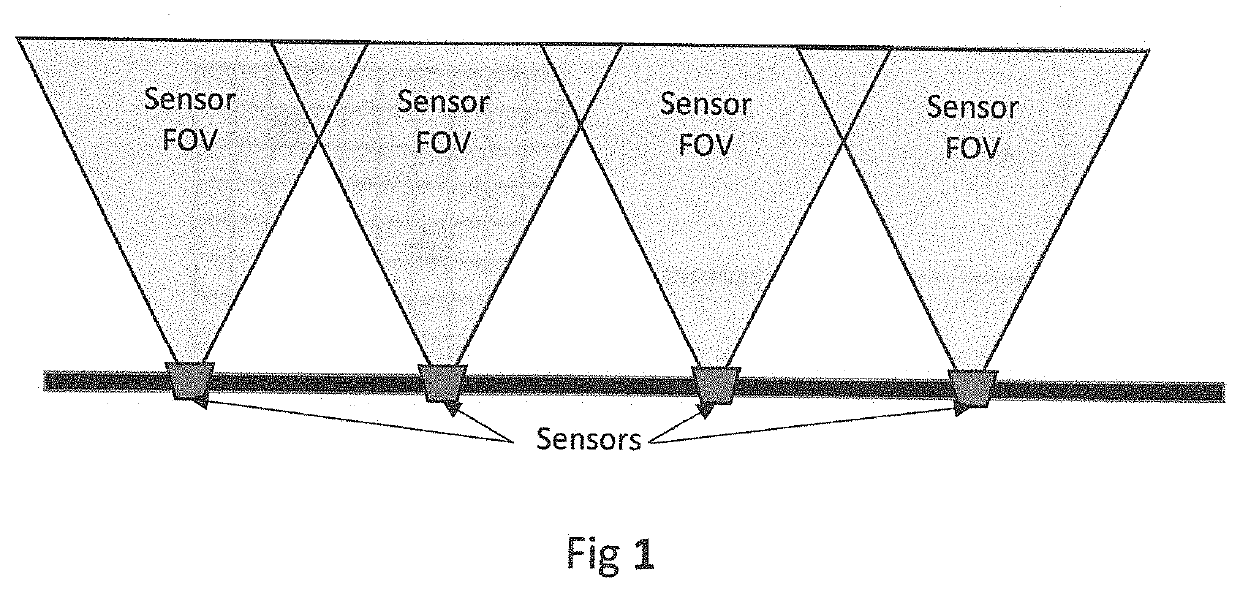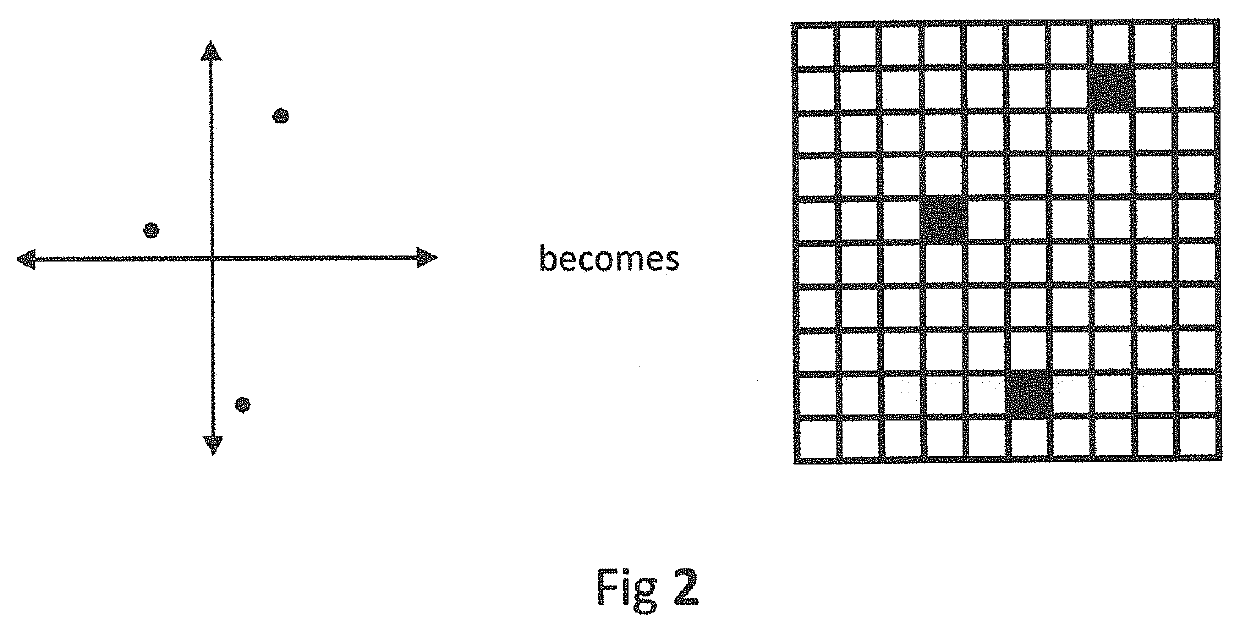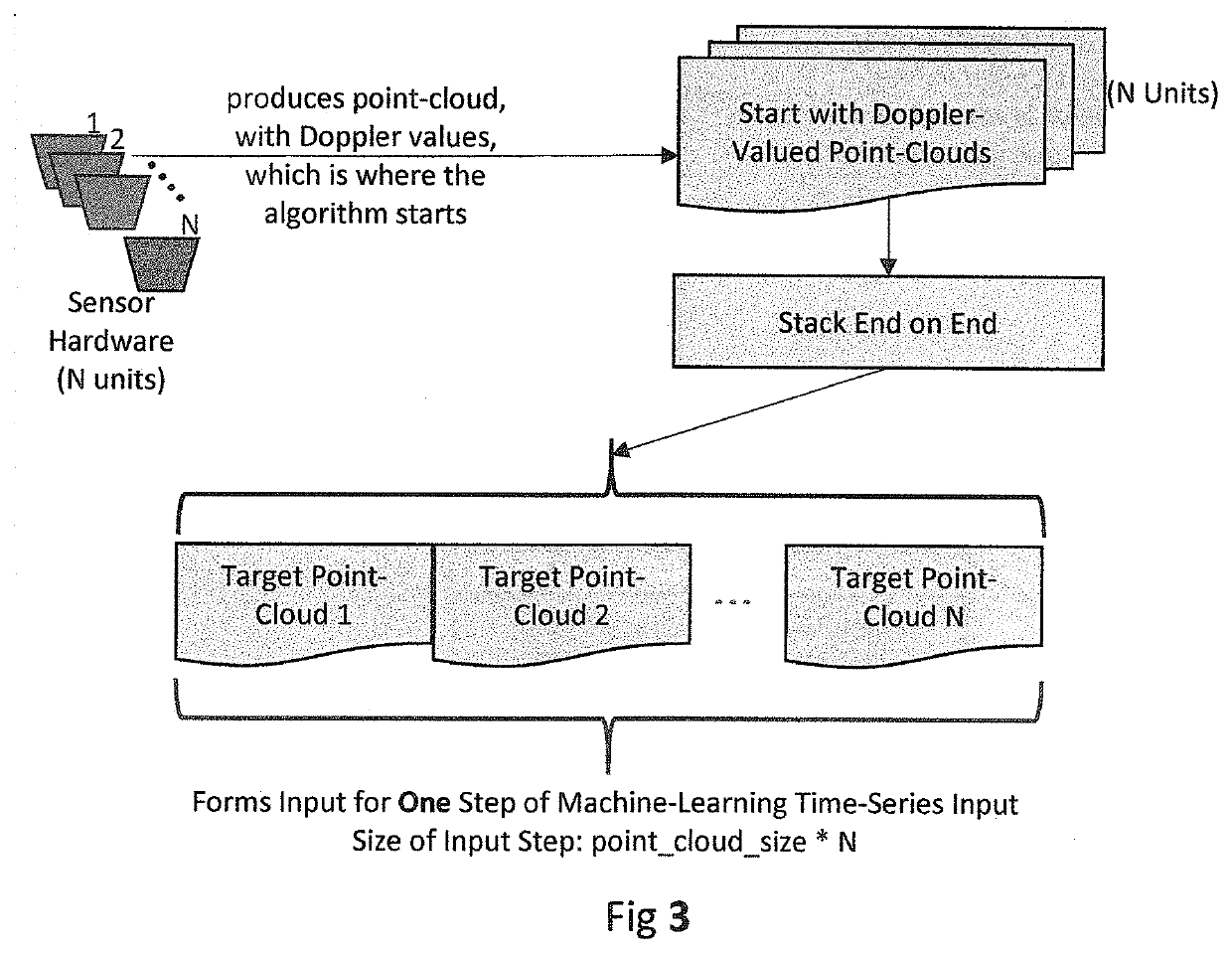Multi-sensor data overlay for machine learning
a multi-sensor data and machine learning technology, applied in machine learning, image analysis, instruments, etc., can solve the problems of large amount of data required by a ml application, large amount of data required, and uninteresting static sensor values, etc., to achieve faster and smaller machine learning models
- Summary
- Abstract
- Description
- Claims
- Application Information
AI Technical Summary
Benefits of technology
Problems solved by technology
Method used
Image
Examples
Embodiment Construction
[0019]Consider an object moving left-to-right through the area-of-detection for the sensor deployment shown in FIG. 1. The object will be detected in the FOV for each successive sensor. The data these sensors gather may be fed into an ML model for any number of applications, including object trajectory projection (where is it going?), object classification (is it a person? a dog? a drone?), target intent (is this person running9 walking? sneaking?) and other applications.
[0020]Depending upon the sensor hardware and ML application, the time-series required to train a model adequately may span more than the FOV of a single sensor. For example, suppose that the deployment in the above diagram has the following characteristics: the sensor samples at 10 samples per second; a person running crosses the FOV of a sensor in roughly 2 seconds; an ML model requires a time-series sample of 30 steps to learn the difference between a running person and a running deer. In this example, the data fr...
PUM
 Login to View More
Login to View More Abstract
Description
Claims
Application Information
 Login to View More
Login to View More - R&D
- Intellectual Property
- Life Sciences
- Materials
- Tech Scout
- Unparalleled Data Quality
- Higher Quality Content
- 60% Fewer Hallucinations
Browse by: Latest US Patents, China's latest patents, Technical Efficacy Thesaurus, Application Domain, Technology Topic, Popular Technical Reports.
© 2025 PatSnap. All rights reserved.Legal|Privacy policy|Modern Slavery Act Transparency Statement|Sitemap|About US| Contact US: help@patsnap.com



